Physiology Friday #279: Adding Protein to Carbs after Exercise Enhances Muscle Recovery
Glycogen, amino acids, and a new way to think about post-workout nutrition.
Greetings!
Welcome to the Physiology Friday newsletter.
This week I want to shoutout my new favorite protein bar—BOLD Bar.
Founded by Sean Jagermann, BOLD BAR launched in April 2025 to redefine on-the-go fuel. Each bar packs 20g of protein and 100mg of caffeine, and is sweetened only with honey, for a clean, simple, and satiating snack. BOLD is the only bar on the market built on these three uncompromising pillars: high protein, a real caffeine boost, and natural sweetness with zero artificial ingredients or sugar alcohols. Sean sent me a box of these things and they were gone within a a few days…they’re seriously delicious.
He’s giving my audience 25% off their order + free shipping with the code BOLD25. BOLD is a small startup that Sean runs himself, so if you enjoy the bars, please do spread the word with friends and family.
What should you eat to recover after exercise?
It’s a topic of endless debate, and that’s because not only do guidelines change as newer science emerges, but also because there are many ways to define “recovery.” Endurance athletes are often concerned with rapidly and fully replenishing muscle glycogen, while strength-oriented athletes stress about optimizing muscle protein synthesis (though each group should be concerned about both, in my humble opinion). In any case, protein and carbs dominate the discussion, with carbs taking center stage for recovery after endurance activity.
Traditional guidelines emphasize carbohydrate intake as a cornerstone for post-exercise glycogen recovery, often recommending up to 1.2 grams per kilogram of body mass per hour. However, there's ongoing debate regarding not just how much carbohydrate is necessary, but also what types are most effective.
Combining multiple carbohydrate sources—such as glucose-based polymers (like maltodextrin) with fructose—can significantly enhance glycogen resynthesis, especially in the liver (we store glycogen in two main compartments: muscle and liver). Fructose, unlike glucose, is preferentially metabolized by the liver, potentially providing a targeted strategy for rapidly restoring liver glycogen, which plays a crucial role in sustaining blood glucose levels during long-duration exercise.
In addition to carbohydrates, protein has emerged as another key player in post-exercise nutrition. Its role in muscle recovery and remodeling isn’t controversial, but its role in glycogen resynthesis is. Some studies suggest that co-ingesting protein with carbohydrates could augment insulin secretion, enhancing glycogen replenishment, particularly when carbohydrate intake is suboptimal (i.e., less than 1.2 grams per kilogram per hour). Conversely, others raise concerns that protein ingestion increases glucagon secretion—a hormone traditionally considered antagonistic to glycogen storage—potentially reducing liver glycogen synthesis and offsetting any benefit derived from the insulin response.
This is incredibly important because if protein does in fact compromise liver (or muscle) glycogen resynthesis, then it might be best to forgo it in the few hours after exercise in favor of carbohydrates. But that’s not what most of us do (nor should we). It remains unclear whether combining carbohydrate sources (like maltodextrin and fructose) with protein provides an advantage for glycogen replenishment or whether it compromises liver glycogen recovery due to increased glucagon secretion.
A recent study published in The Journal of Physiology decided to tackle this question.1
Researchers studied 10 well-trained amateur male cyclists (average age 29). The participants completed four glycogen-depleting exercise protocols, each with a different post-exercise nutritional intervention.
The depletion protocol involved 2-minute cycling intervals (with 2 minutes of recovery) at intensities starting at 90% peak power output and progressively decreasing through 80%, 70%, and 60% PPO until the participants reached complete exhaustion. On average, exercise sessions lasted 82 minutes with 36 minutes spent in the “high-intensity” interval portions (between 90% and 60% of maximal capacity). Not an easy workout by any means.
Immediately after glycogen depletion, a 5-hour recovery phase began. During this time, participants consumed 60 grams per hour of carbohydrates from one of four beverages. This amount (60 g/hour) is particularly noteworthy because it likely represents a suboptimal carbohydrate intake for maximal glycogen replenishment, which allowed researchers to clearly evaluate if adding protein provided any additional benefits. Here were the four conditions:
Maltodextrin-only: 60 g maltodextrin per hour, every hour for five hours.
Fructose-only: 60 g fructose per hour, every hour.
Maltodextrin + Fructose: 30 g maltodextrin + 30 g fructose per hour, every hour.
Protein trial: Same dual-source carbohydrates (30 g maltodextrin + 30 g fructose per hour), plus 30 g whey protein at two strategic points (hour 0 and hour 3), reflecting real-world athletic feeding patterns.
MRS and MRI were used to measure muscle and liver glycogen at three points: immediately after exercise, after 2 hours, and after 5 hours of recovery. Blood samples were regularly collected throughout the recovery period to analyze hormones and metabolites (insulin, glucagon, glucose, lactate, non-esterified fatty acids, essential amino acids, and branched-chain amino acids). Additionally, gastrointestinal symptoms were monitored using participant-reported visual scales.
One of the most striking findings was how effectively liver glycogen recovered with dual-source carbohydrates and protein compared to maltodextrin alone. After the 5-hour recovery period, liver glycogen concentrations were clearly highest in the protein trial (maltodextrin + fructose + protein), reaching 283 mmol/L, closely followed by the fructose-only condition (275 mmol/L) and the maltodextrin + fructose dual-carb condition (255 mmol/L). All three fructose-containing conditions outperformed the maltodextrin-only trial, which resulted in significantly lower liver glycogen (204 mmol/L).
When looking at total liver glycogen storage (the actual amount of glycogen stored), the trend remained the same. The protein trial again led with 82 grams stored, slightly more than fructose (78 g) and maltodextrin + fructose (74 g). Maltodextrin alone, however, fell notably short, storing only 57 g. This means that combining carbohydrates with protein, or at least including fructose, boosts liver glycogen replenishment—a key consideration for endurance athletes looking to optimize their fuel reserves before their next training session or competition.
A major advantage of adding whey protein became evident when looking at amino acid levels. The protein condition showed significantly higher total availability of essential amino acids (EAAs) and branched-chain amino acids (BCAAs) compared to all other trials. This result confirms that protein co-ingestion directly supports muscle recovery by delivering the essential building blocks for muscle protein synthesis and repair—arguably just as critical as glycogen recovery for long-term athletic progress.
Surprisingly, the study revealed no meaningful differences between treatments when it came to replenishing muscle glycogen, which increased similarly across all four nutritional conditions.
Regarding some of the hormonal responses, insulin and glucagon differed notably between conditions. Insulin, a hormone critical for glycogen storage, showed elevated levels primarily in the maltodextrin-only and protein-added trials compared to both fructose-containing trials. Specifically, maltodextrin and protein induced similarly high insulin responses, reflecting their potent stimulation of glucose uptake and glycogen synthesis.
Glucagon, which usually acts in opposition to insulin by stimulating glucose release from the liver, also showed an intriguing pattern. Both maltodextrin and protein trials had higher glucagon levels compared to fructose and maltodextrin + fructose. The elevated glucagon in the protein condition was particularly noteworthy since glucagon typically opposes glycogen storage. However, despite these elevated glucagon levels in protein, liver glycogen recovery remained excellent.
From a practical perspective, gastrointestinal comfort is critical when we’re looking to optimize nutrition. The pure fructose condition demonstrated its practical downside, with significantly greater feelings of stomach fullness and discomfort compared to maltodextrin. Two participants even had to terminate the fructose-only trial prematurely due to severe gastrointestinal symptoms. In contrast, combining maltodextrin and fructose (with or without protein) dramatically reduced these discomforts, highlighting that dual-source carbohydrates are both physiologically effective and better tolerated in practice.
I love writing about studies like this one because the takeaways—while not earth-shattering—are simple and potentially effective.
Many of us already practice (intentionally or not) combining protein and carbs post-workout. Eating a mixed macronutrient meal usually accomplishes that goal.
But sometimes we opt for a carbohydrate- or protein-dominant snack or meal, and this study would suggest that we should think of these two macronutrients as being synergistic rather than at odds with one another. The findings also help add nuance to the “debate” of whether carbs or protein are more important after a workout. That’s probably the wrong question.
The focus in recent years has emphasized the importance of carbohydrate timing for enhancing recovery (and it definitely is). The good news here is that adding protein doesn’t negate any glycogen-replenishing effects of post-workout carbs. In fact, it has the added benefit of providing what we need to repair muscles (amino acids) after a workout. And even though the differences in liver glycogen weren’t statistically different, protein + carbs did provide an edge that, across the course of a workout or multiple weeks of training, likely provides a practically meaningful performance boost. That’s something that carbs alone didn’t do.
If 60 grams of carbs every hour for 5 hours seems like overkill, you’re not alone. That’s a pretty serious recovery protocol, but it’s not something that needs to be done after every workout. You probably only have to be so diligent after your 1–2 hardest workouts of the week—those that take you into the realm of true glycogen depletion. When you do, here’s a solid protocol based on this study:
Consume ~60 grams of carbs every hour for 5 hours (alternatively, you could consume ~100-150 grams of carbs every 2-3 hours).
Add 30 grams of whey protein (or other protein source) to the 2 meals after your workout.
Make sure your carbs are coming from multiple sources - if you’re opting for whole food rather than sports nutrition products, that might mean combining grains or legumes with some starchy vegetables and fruit (for the fructose!)
Otherwise, sensible nutritional practices and a few square meals are probably just fine.
Thanks for reading. See you next Friday.
~Brady~
The VO2 Max Essentials eBook is your comprehensive guide to aerobic fitness, how to improve it, and its importance for health, performance, and longevity. Get your copy today and use code SUBSTACK20 at checkout for a 20% discount. You can also grab the Kindle eBook, paperback, or hardcover version on Amazon.
Examine.com: Examine is the largest database of nutrition and supplement information on the internet.
Ketone-IQ is high-performance energy in a bottle. I use it for post-exercise recovery along with enhancing focus, mood, and cognition. Take 30% off of your order.



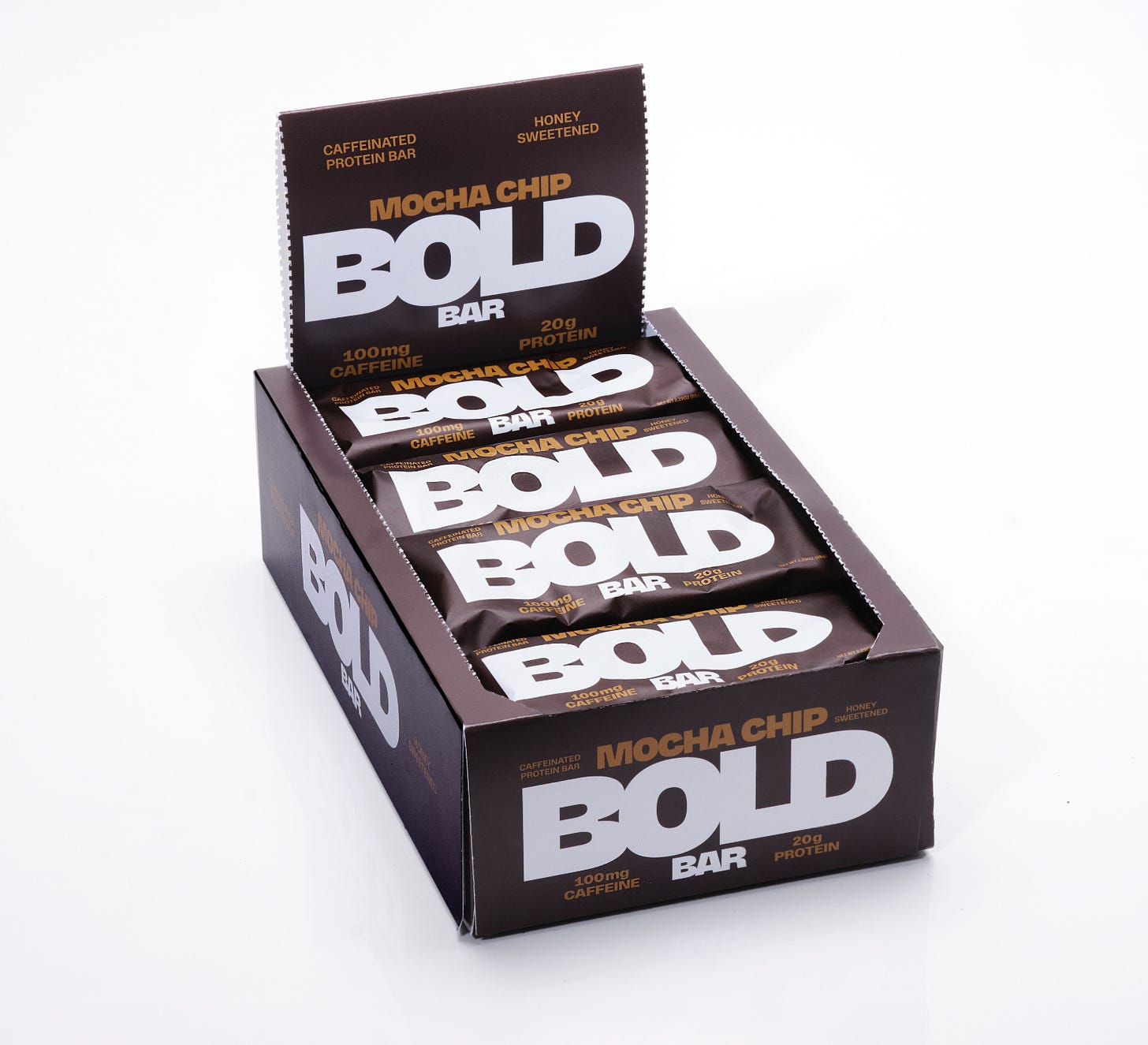
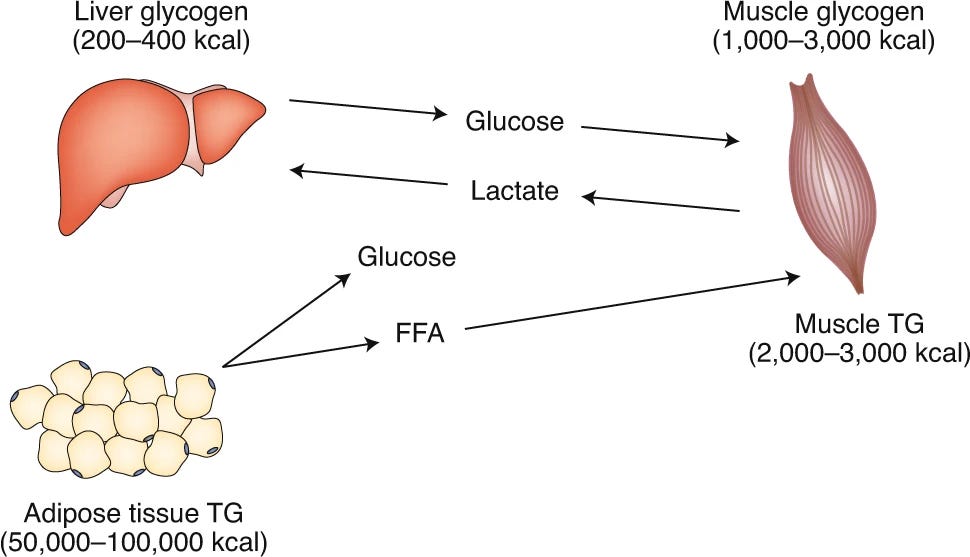
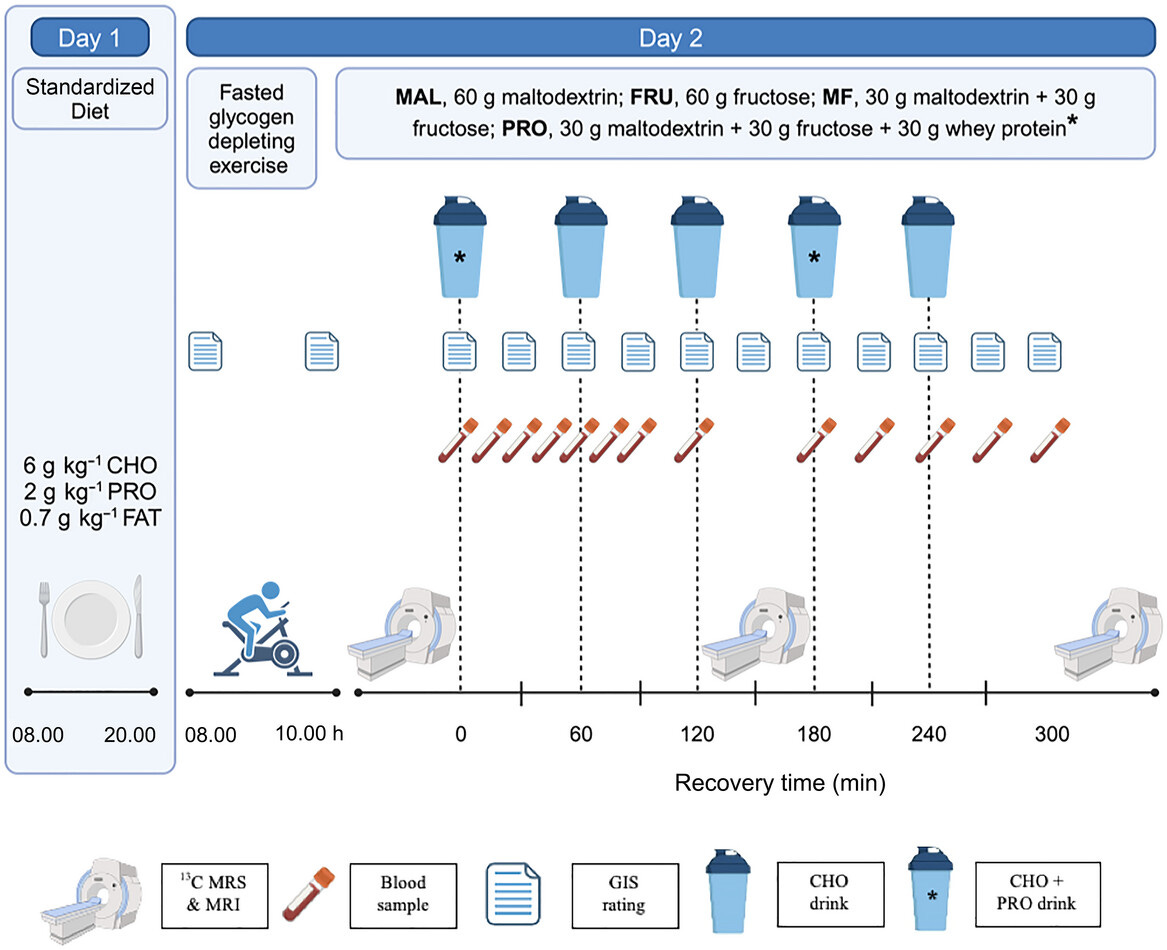
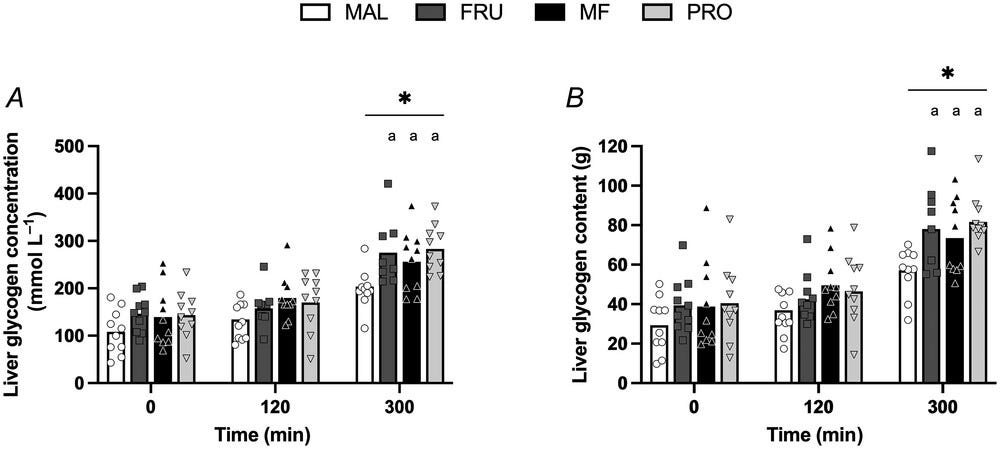
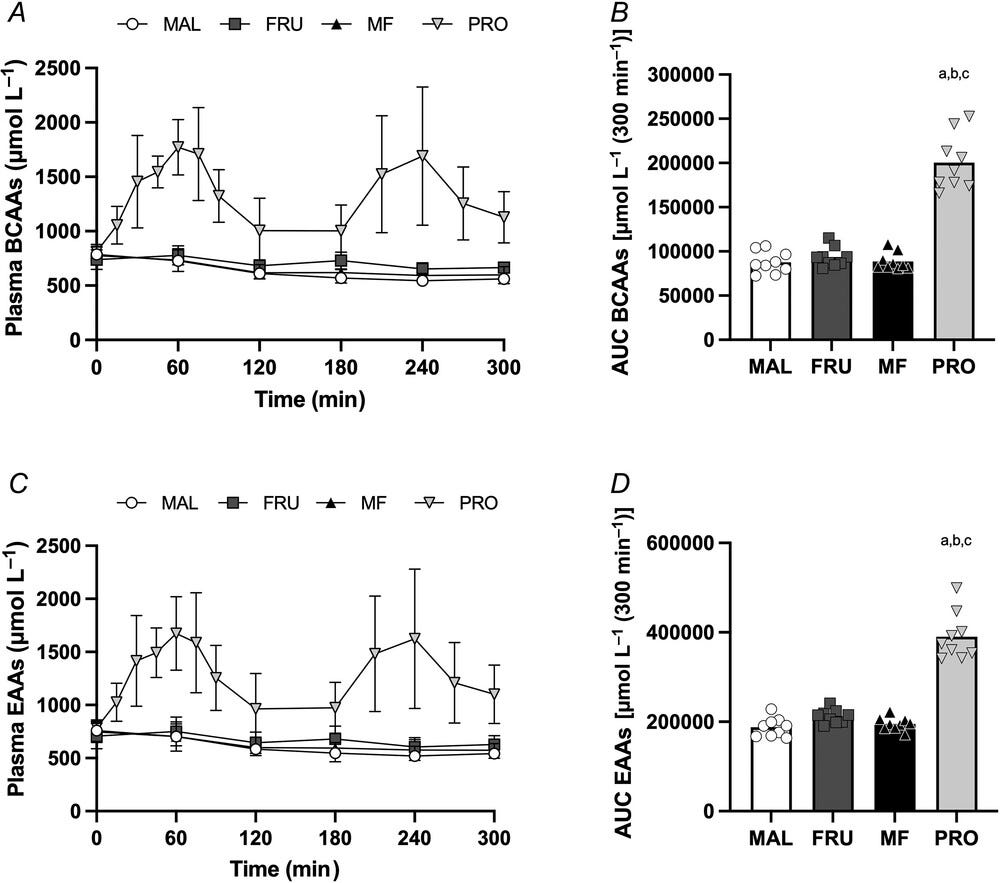
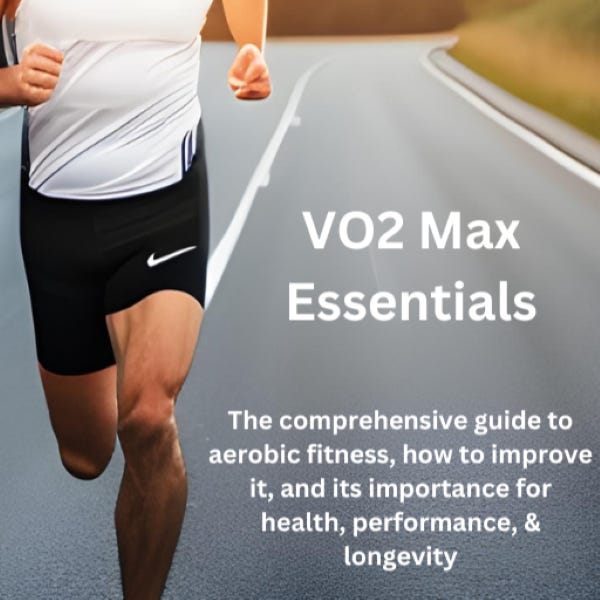


And so it goes on and on with all the maybe's and perhapses and then in a couple of weeks it changes again.
It’s my understanding that maltodextrin negatively interferes with healthy gut biome. Is this accurate?